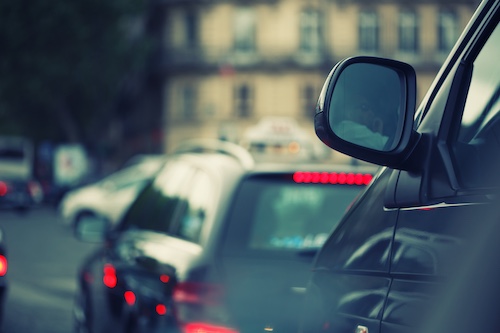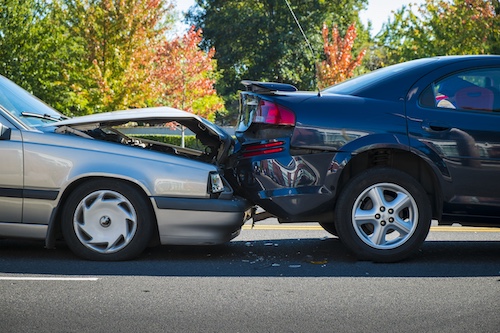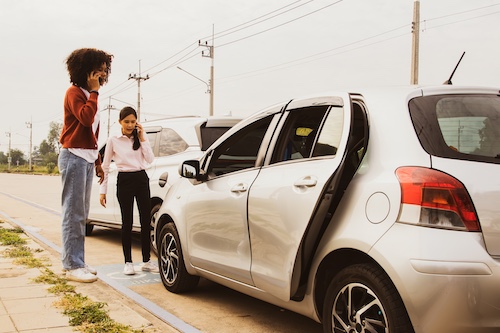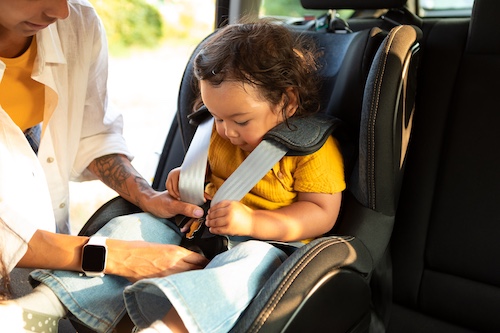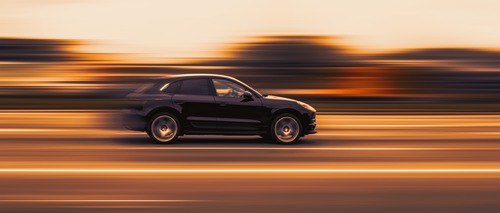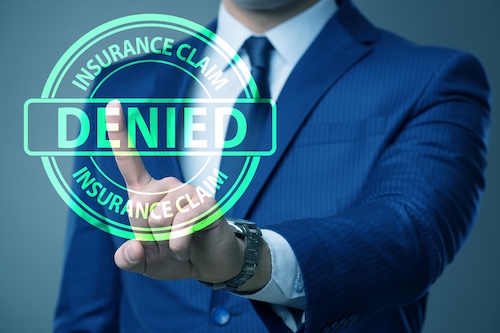Following Too Close in Georgia Car Accidents
Following too close is a leading cause of rear end collisions on Georgia roads. When a driver fails to leave sufficient space, the risk of a crash increases and the question of fault becomes critical. Georgia law sets clear rules for safe driving distances, and insurance companies often view the rear driver as the at fault driver in these cases.
Understanding how fault is determined, what evidence matters, and what defenses may apply can help injured drivers protect their rights and seek compensation with the help of an Atlanta car accident attorney.
Georgia Law on “Following Too Close”
Following too close is one of the most common causes of a rear impact collision in Georgia. State law sets clear rules for how drivers should leave sufficient space between vehicles to prevent crashes and injuries.
Statute Defining Following Too Close
Under O.C.G.A. § 40-6-49, a driver cannot follow another motor vehicle more closely than is reasonable and prudent. The law requires each driver to leave sufficient space so they can stop safely if the other car slows or stops. This rule applies on highways, local roads, and in heavy traffic conditions.
How Authorities Measure Sufficient Space
Law enforcement officers determine whether a driver left enough space by reviewing the scene of the accident. Factors include speed, traffic flow, and road conditions. Physical evidence such as skid marks, vehicle damage, and statements from other drivers or witnesses often supports a following too closely citation.
Why the Law Matters in Car Accident Claims
A violation of O.C.G.A. § 40-6-49 can serve as strong evidence of negligence in a personal injury lawsuit. If an accident occurred because one driver failed to leave sufficient space, that person is often considered the at fault driver. This can affect liability, insurance claims, and the ability of an injured person to seek compensation for medical expenses, lost wages, and other losses.
Why “Following Too Close” Often Leads to Fault
Following too close creates dangerous conditions that often place liability on the rear driver after a collision.
Rear Impact Collisions and Liability
Most rear end crashes occur because the following driver did not leave sufficient space to stop safely. When a rear impact collision happens, the other driver is often struck without warning. Insurance companies and courts usually consider the rear driver the at fault driver in such cases.
Insurance Company Assumptions
Insurance companies often presume the driver who rear ends another car was following too closely. This assumption affects how claims are processed, how financial responsibility is assigned, and how insurance rates may rise after the crash.
Comparative Negligence in Georgia
Georgia law applies comparative negligence rules under O.C.G.A. § 51-12-33. While the following driver is usually at fault, other factors can shift liability. If the other driver made a sudden stop, failed to maintain brake lights, or acted unsafely, fault may be shared. This can reduce or increase the compensation available in a personal injury lawsuit.
Determining Fault in Georgia Following Too Close Accidents
Determining fault in a motor vehicle accident where one driver was following too close depends on evidence, testimony, and Georgia traffic law.
Role of Law Enforcement
Law enforcement officers investigate the scene, speak with drivers, and review physical evidence. A following too closely citation issued at the scene can be a strong indicator of negligence. Police reports often document skid marks, vehicle positions, and other relevant information that helps identify the at fault driver.
Importance of Physical Evidence
Physical evidence such as resulting vehicle damage, skid marks, and debris patterns provides clear proof of how the collision occurred. Dash camera footage, red light camera recordings, and witness statements can also confirm whether a driver left sufficient space before the crash.
Other Contributing Factors
Courts also weigh factors like speed, weather, and heavy traffic. An overtaking vehicle cutting too closely in front of another car can shift some responsibility. The investigation must consider every element to determine liability and financial responsibility for bodily injury, property damage, and other losses.
Court and Insurance Company Evaluations
Insurance companies rely on this evidence when assigning liability and deciding whether enough insurance is available to cover damages. Courts may use the same information to rule on a personal injury lawsuit and compensation claims. A thorough investigation ensures fault is assigned fairly based on all available evidence.
Possible Defenses Against a Following Too Close Claim
A driver accused of following too close may raise defenses that reduce or shift fault in a motor vehicle accident.
Mechanical Failure of the Vehicle
If a vehicle suffers a sudden brake failure or another mechanical defect, the driver may argue that the accident occurred despite reasonable care. Evidence such as repair records or expert inspection can support this defense in court or during an insurance claim.
Unsafe Actions by the Other Driver
Liability can shift if the other driver changed lanes without leaving sufficient space, braked suddenly in heavy traffic, or operated a car with faulty brake lights. In such cases, fault may be shared under Georgia’s comparative negligence rules.
Weather and Road Conditions
Rain, fog, or road hazards can create conditions where a rear end collision is not entirely the fault of the following driver. Courts and insurance companies consider these other factors when determining fault and assigning financial responsibility.
No Fault Policy Misconceptions
Georgia does not follow a no fault system. Drivers must prove negligence to seek compensation for bodily injury, property damage, and lost wages. A skilled accident attorney can raise valid defenses, review other evidence, and challenge closely citations issued by law enforcement.
Financial Consequences of a Following Too Close Collision
A following too close collision often creates significant financial consequences for drivers and passengers involved.
Medical Expenses and Bodily Injury
Victims of a rear impact collision may face high medical expenses from emergency treatment, rehabilitation, and ongoing care. Bodily injury claims often include costs for surgeries, physical therapy, and medication. These expenses are central to a personal injury lawsuit.
Property Damage and Vehicle Repairs
Vehicle damage and other property damage from the crash can be costly. Insurance companies evaluate repair estimates, replacement values, and resulting vehicle damage when assigning financial responsibility to the at fault driver.
Lost Wages and Other Losses
An injured person may miss work for days, weeks, or longer. Lost wages and reduced earning capacity are common claims in such cases. Other losses, including reduced quality of life, can also be part of a compensation demand.
Insurance Rates and Liability
A following too closely citation or a finding of fault can raise insurance rates for the liable driver. If there is not enough insurance to cover damages, victims may need to pursue a personal injury lawsuit. In these situations, a thorough investigation ensures that financial responsibility is placed on the proper party.
Contact an Experienced Atlanta Car Accident Lawyer ASAP!
If you were injured in a collision caused by a driver following too close, our team at GMV Law Group is ready to help. We provide a free consultation to review your case, explain your rights, and guide you through the process of seeking compensation for medical expenses, lost wages, and other losses.
Contact us at 404-975-4878 for a free case review today!

